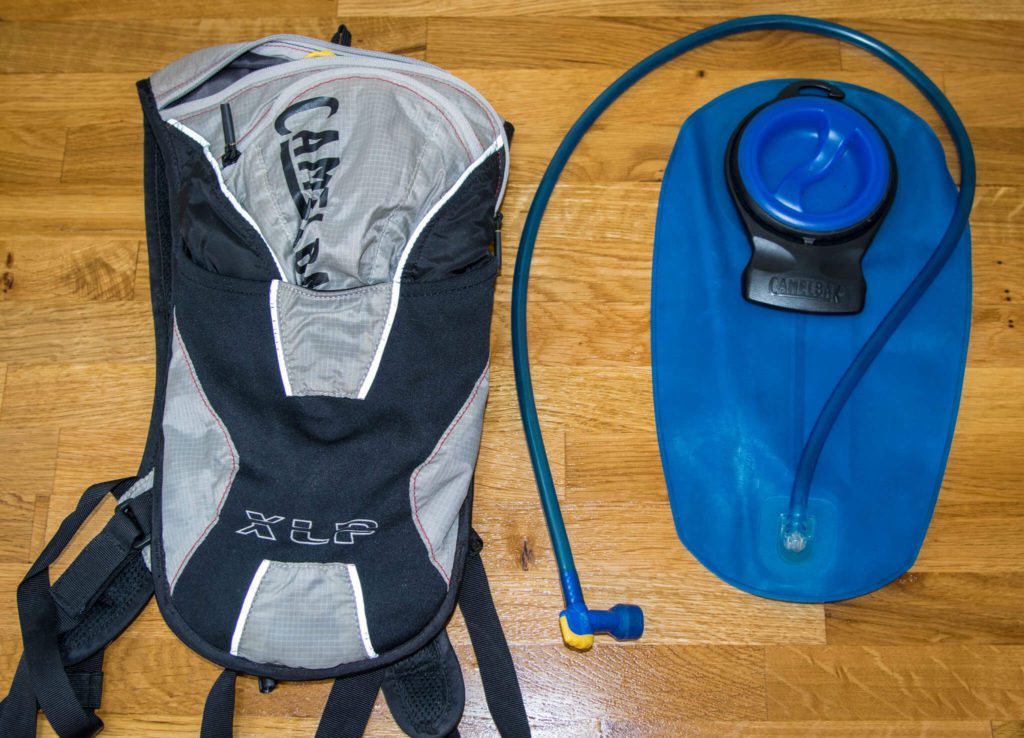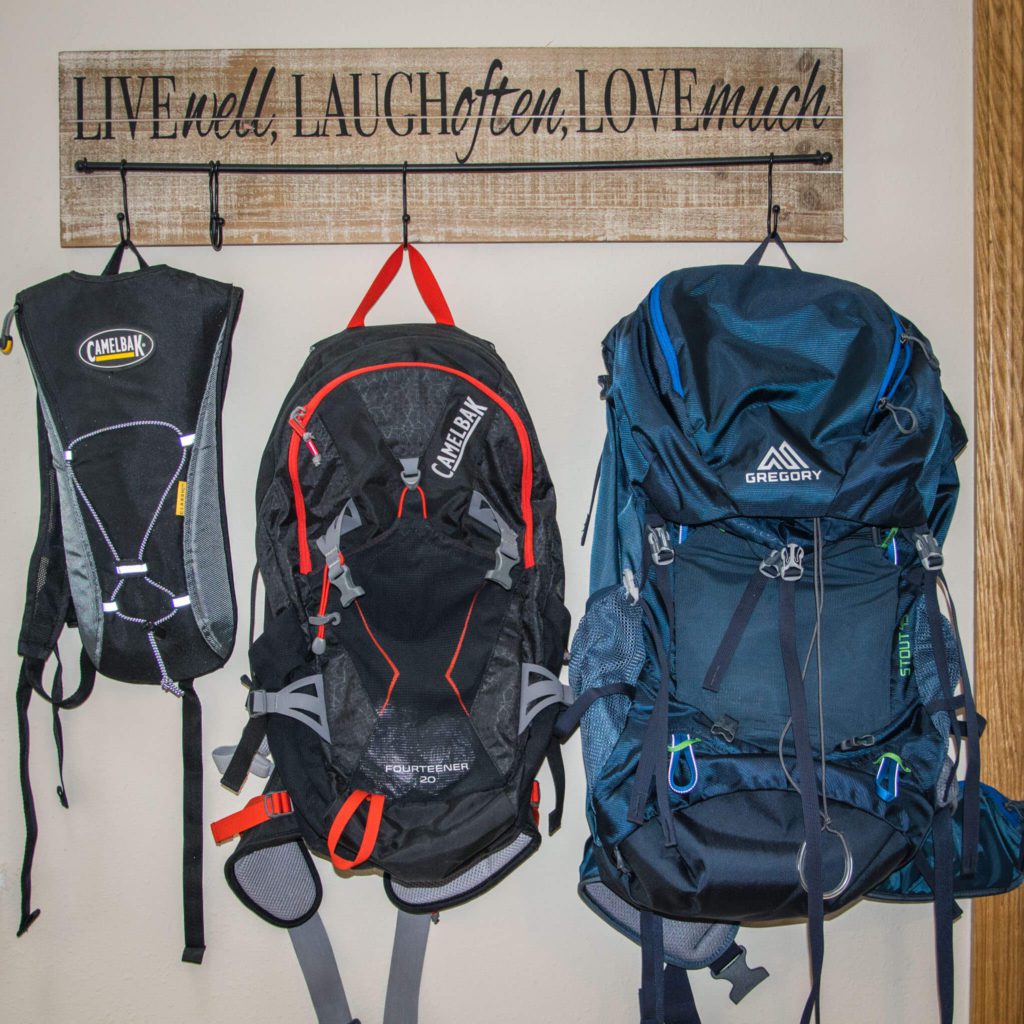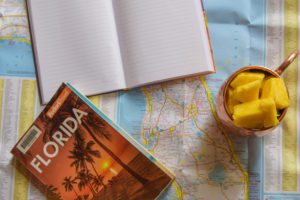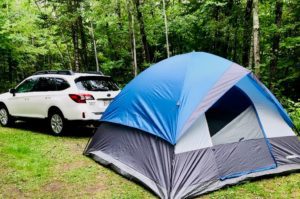So you’ve decided to hit the road! You’re planning on taking some long hikes, short walks or long drives. But how do you stay hydrated? Hydration packs are, in our humble opinion, one of the best ways to stay hydrated while traveling or “athletic”-ing. Continue reading to see why we sing their praises and give you tips on how to choose a hydration pack for your needs?

What is a Hydration Pack?
In their simplest form, hydration Packs are designed to hold water and allow you to drink from them. They are typically some kind of backpack, belly-bag or other type of pack that holds a water bladder. Also, they normally have some kind of straw that allows you to drink from the bladder without having to remove it from the pack. Another feature that is common is that they generally allow you to perform some kind of athletic activity while wearing them so that you don’t have to worry about them bouncing about.
So Why Do You Want A Hydration Pack?
These are one of our favorite gizmos for traveling. They are the best because they both carry water and stuff. You can empty the bladder and use them as a normal backpack and then choose to add water when needed.
We love using them as our carryons when traveling. We empty the bladder and stuff the pack full. Then when we’re doing a hike or other adventure, we can fill the bladder up ahead of time. We also use them as you would a water bottle for non-adventure activities. A water bladder is much lighter and takes up much less space when empty than a water bottle.
Basically, they’re awesome and we think you should run out and choose a hydration pack today.
What Will You Use Your Hydration Pack For?
Before you choose a hydration pack, you should identify what you will be using it for.
Some of the most common uses for hydration packs correspond with sporting activities. Activities like running, cycling, hiking and paddling are some great activities that would benefit from a hydration pack. If you’ll primarily be using your pack for one of these sports, you’ll want to make sure that the hydration pack you choose will be best for that sport.
However, since we don’t run unless being chased, and we only participate in sports for leisure purposes, we’re going to continue our article focusing on general all purpose hydration packs that are great for traveling with. This is a travel blog after all and so when we choose a hydration pack, our most important factor is how well it travels and how many uses we can have for it.

How to Choose a Hydration Pack?
Choose bladder size
How much water do you need to hold at one point? If you do a lot of backcountry hiking, you may want to consider choosing the largest bladder size. However, remember that water is heavy and you have to carry it. If you are generally close to a water source, you could get away with the smallest bladder size.
A majority of our bladders are 70-100 oz. One thing to note is that you can choose the largest size bladder and then not fill it all the way unless needed. We always take our largest pack when traveling and then partially fill it on short hikes.
Choose a Pack Type
Decide what you need to carry with you. This is the funnest part for me when choosing a hydration pack.
There are two main fit types: backpacks and waist packs/vests.
Waistpacks are generally made for small adventures and vests are generally designed for running. Since we like our hydration packs for traveling, we don’t like waist packs or vests as they don’t have enough space in them, so we’ll ignore this category. But if you’re interested in a smaller pack, these are for you.
Backpacks come in a variety of sizes and shapes. We have small packs that carry only water and have a zipper pocket for keys. We also have overnight hiking backpacks that include water bladders. They all have fun pockets to store stuff in, just in varying amounts. Our favorite size for traveling is our Camelback that is about the size of a regular school backpack. We can store water, snacks, phones, jackets and cameras all in one pack.
Choose other features
Straps that secure the pack to you are an important feature to keep in mind. Hydration backpacks typically come with backpack straps. Some packs also come with cushioned or air vented shoulder straps.
Other straps to keep in mind are chest straps. These are handy for doing activities like rugged hiking as they keep the should straps in place.
The last type of strap to keep in mind are hipbelts. Hipbelts are used to take weight off of your shoulders and transfer them to your waist. These are a crucial feature to have if you’re planning on carrying a lot of weight in your pack.
The last area to consider as you choose a hydration pack is the giant tube that acts as a straw to drink with. Some tubes disconnect and some don’t. Having one that disconnects can be helpful for drying your bladder out after use. It’s also helpful if you want to remove the bladder from the pack to fill it, which is recommended if you don’t want other things in the pack getting wet.
Tubes also have different bite valves that enable drinking. Some screw, some flip a valve, some pinch, most you bite. We love Camelback brand bladders for this one and only reason. The bite valve is perfect in our opinion. This is something you probably can’t try out in the store (germs and all). However, look into how convenient the drinking end is as it’s pointless to carry water with you if you’re going to avoid drinking it because of the straw.
When you choose your hydration pack, we hope it brings you well-hydrated fun adventures. And we hope you enjoy it and find it as useful as we have.




Great tips! I’m due to do Kilimanjaro later this year (fingers crossed!) and need to get one of these. I think I’m going to go for a 2l one. Will check out your recommendations 🙂
I hope you make it!